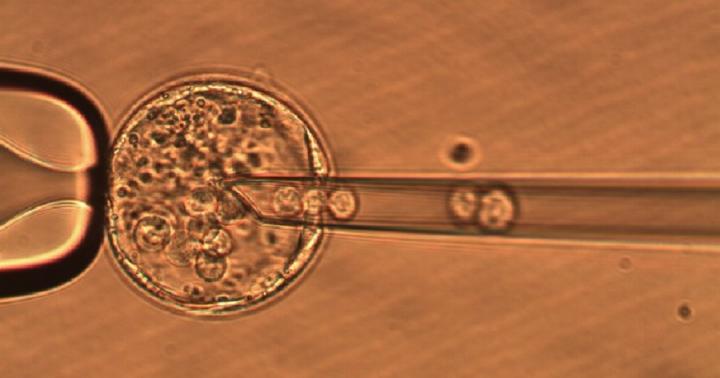ES Cell Microinjection (Rats)
Information on targeted Embryonic Stem (ES) cell microinjection to generate transgenic rats

One method of generating transgenic rats involves the microinjection of targeted embryonic stem (ES) cells into a rat blastocyst embryo. During embryo development, the introduced ES cells integrate within the recipient embryo's inner cell mass to form a new chimeric embryo. CTC can arrange for your custom-made targeted ES cells to be injected into blastocyst-stage donor embryos. Typically, pigmented ES cells are injected into Sprague-Dawley donor embryos. Injection of Fisher F344 cells into Dark Agouti donors has also been successful.
Once born, chimeric rats can be identified by their coat color. A rat with a high percentage coat color of the ES cell strain is called a “high percentage chimera”. Coat color however is not indicative of the ES cell’s integration within the resulting rat’s germ cells and subsequent transmission of the modified allele to its progeny. Male chimeras therefore need to be bred to a wild type female to determine germ-line transmission (GLT). Coat color of the progeny will determine if GLT has been successful.
Researcher’s responsibilities during process:
- Order/generate and expand targeted ES cells (ensuring to check quality controls performed by the company if ordering from a commercial source).
- Establish a screening protocol to identify transgenic rats either by PCR or Southern blot.
- Complete the ‘Request to Produce Transgenics Form’ and return it to the CTC manager (please see below).
- Provide CTC with proof of IMPACT testing of the ES cells.
- Bring targeted ES cells to the designated facility no later than 10am on the day of injection.
- Provide feedback regarding germ-line transmission to CTC (please see below).
CTC’s responsibilities during process:
- CTC will provide vasectomized and stud males and organize the purchase female rats on behalf of the researcher.
- CTC staff will communicate with the researcher and arrange suitable dates for injection sessions.
- CTC staff will inject donor blastocysts and embryos will be transferred to pseudopregnant recipients.
- The generation of chimeric rats is highly dependent on the condition of the ES cells. We cannot guarantee transmission of the mutation through the germ line.

